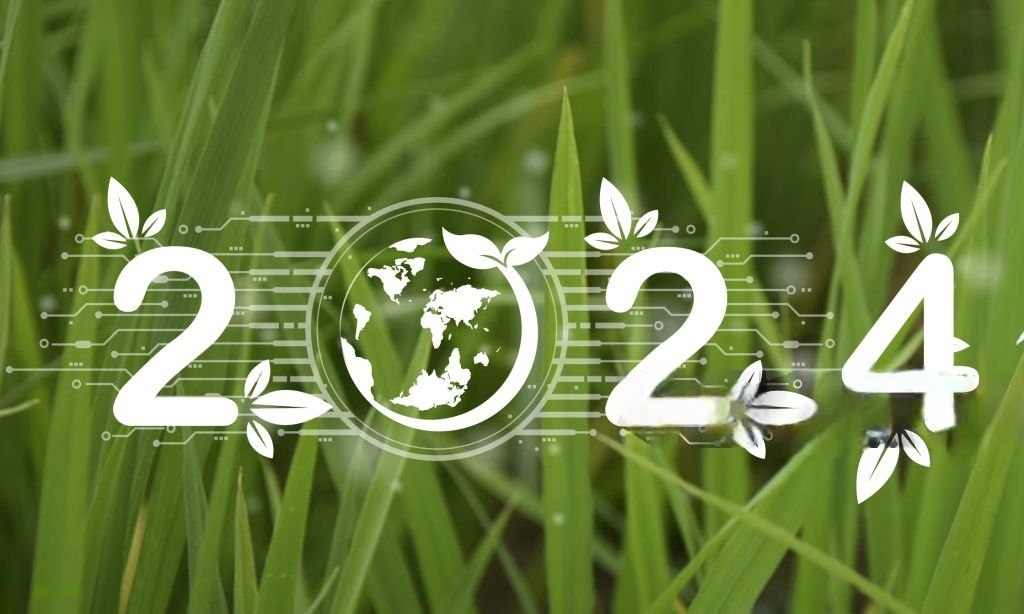Agriculture outlook 2024
In the dynamic field of agriculture, 2024 stands out as a turning point marked by creativity, sustainability, and adaptability. The agriculture industry is currently confronted with a plethora of opportunities and problems that will shape the future course of food production and delivery. We explore the many facets of agriculture in this in-depth examination, exploring the opportunities, challenges, and trends that will shape the coming year. The agricultural sector is set for a significant transition, from the introduction of cutting-edge technologies to address urgent environmental concerns to changes in consumer preferences forcing adjustments in production methods.
Furthermore, the need for resilient agricultural systems and sustainable farming practices has never been greater in light of the growing worries over climate change and food security. It is becoming more and more clear as we traverse the complexity of the contemporary agricultural world that cooperation, creativity, and forward-thinking methods are necessary to cultivate a future where agriculture not only sustains but thrives. Come along on this journey with us as we examine the shifting agricultural landscape of 2024 and consider the opportunities that lie ahead.
Embracing Sustainability:
Modern agriculture now operates under the guiding concept of sustainability, which reflects a growing understanding of the connections between food production, environmental health, and social well-being. We predict that regenerative farming methods will continue to gain popularity in 2024 with the goal of improving and restoring ecosystem health. Farmers will adopt practices including crop rotation, cover crops, and conservation tillage as a means of increasing soil fertility, lowering erosion, and sequestering carbon. In addition, the use of precision agriculture technologies, such as sensors, drones, and data analytics, will allow farmers to minimize input waste, maximize resource efficiency, and lessen environmental effects.
Digital Transformation:
Without a doubt, digital technology will drive innovation and efficiency in farming in the future. By 2024, artificial intelligence (AI), machine learning (ML), and the Internet of Things (IoT) will likely be the main drivers of the growth of smart farming solutions. Farmers will be able to make data-driven decisions in real-time as AI algorithms analyze massive volumes of data to deliver actionable insights on crop health, pest management, and yield optimization. IoT-enabled gadgets will also improve resource management and use less water, such as soil moisture monitors and automatic irrigation systems. Additionally, consumers will be able to track the provenance and path of their food items thanks to blockchain technology, which will transform supply chain transparency and promote responsibility and trust within the agricultural ecosystem.
Urban Agriculture:
Urban agriculture will become more and more important for food production and community resilience as urbanization picks up speed. We predict a spike in urban farming projects in 2024, such as aquaponic systems, vertical farms, and rooftop gardens, as communities look to improve food security and encourage sustainable living. These cutting-edge farming techniques help create green spaces, sequester carbon dioxide, and conserve biodiversity in addition to giving urban residents access to fresh, locally farmed vegetables. Furthermore, community-led programs like farmers’ markets and urban gardening cooperatives will strengthen social links and provide communities with the authority to manage their own food systems.
Climate Resilience:
Global food security is seriously threatened by climate change, which makes it imperative to take immediate action to strengthen agricultural systems’ resilience. Farmers will continue to invest in resilient crop varieties, enhance water management strategies, and apply climate-smart agricultural methods in 2024 to adapt to changing climatic circumstances. Farmers will increasingly turn to agroforestry systems, heat-tolerant livestock varieties, and drought-resistant crops in an effort to minimize the effects of extreme weather events and maintain the long-term profitability of their businesses. Moreover, new solutions to address climate-related concerns and protect the food supply for future generations will require the cooperation of scientists, policymakers, and farmers.
Shifting Consumer Preferences:
A greater focus on sustainability, ethical consumption, and health is changing consumer tastes. We predict that the market for locally sourced, organic, and ethically made food products will continue to expand in 2024. In response to these shifting consumer demands, farmers will expand the range of products they offer, embrace organic certification guidelines, and employ ethical and transparent agricultural methods. Furthermore, as customers look for healthier and more environmentally friendly substitutes for traditional animal products, the popularity of alternative proteins—such as cultured meat and plant-based meat substitutes—will only increase. Farmers now need to embrace innovation and sustainability while adjusting to shifting market dynamics brought about by these shifts in consumer expectations.
Policy and Regulation:
The future of agriculture is significantly shaped by government laws and regulations, which offer the foundation for growth that is both equitable and sustainable. Policymakers will concentrate on putting policies in place to assist sustainable agriculture in 2024. These policies will include conservation initiatives, incentives for the use of renewable energy, and plans to mitigate climate change. In addition, measures to mitigate antibiotic resistance, maintain animal welfare standards, and enforce food safety regulations will continue to be crucial in preserving the integrity and security of the food supply chain. Global agricultural markets will also be impacted by trade policies and geopolitical tensions, which emphasize the necessity of international cooperation and communication in order to address shared issues and advance food security.
Conclusion:
In the journey ahead, the horizon of agriculture in 2024 gleams with promise. By embracing sustainability, innovation, and collaboration, farmers can surmount challenges and grasp opportunities to shape a more resilient and equitable food system. Together, let’s sow the seeds of progress and nurture a future where agriculture not only thrives but also becomes a cornerstone of nourishment for humanity and the planet. As stewards of the land, our collective efforts can pave the way for generations to reap the bounty of sustainable practices, ensuring a legacy of abundance and prosperity for all.

